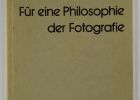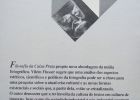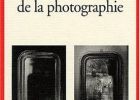Thinking Plurality. Vilém Flusser and Michel Serres: A philosophical convergence
This essay compares Vilém Flusser’s and Michel Serres’s notion of plurality. Flusser’s and Serres’s writing and thinking are strikingly similar even if they radically diverge on some points. For both philosophers, thinking is not a linear progression that moves straight ahead along a simple line, but a journey full of meandering and surprising twists and turns, which can lead back on its tracks. To describe this complex contradictory movement, Flusser uses the spatial metaphors of the circle and the spiral. This is best exemplified in his practice of multiple translations and retranslations, and the Jewish method of Pilpul. Serres, on the other hand, uses the metaphors of the randonnée – a random stroll across a landscape –, the wild flight of a wasp and the unfolding and refolding of a plane of dough. Both authors reject a view of reality based on a single centralized point of view, an umbilical vision of the world, as Serres called it. They both question systematic thinking and favor theoretical plurality and openness. In Flusser’s view, synthesis brings points of view together that often radically differ from each other. For Serres synthesis is a cluster of differentiated but organized relations. Flusser’s and Serres´s thinking is non-linear, non-hierarchical and always open-ended, a proliferation of fixed points to infinity. For both thinkers these different points of view are equally valid.
Interview
This is a short interview with Claude Lutz, the founder and director of Édition Circé, which in 1996 published a French translation of Vilém Flusser’s Für eine Philosophie der Fotografie. Three more translations followed: Petite philosophie du design (2002), Essais sur la nature et la culture (2005) and La Civilisation des médias (2006).
Für eine Philosophy of Caixa Preta. Analyse textuelle critique des différentes versions du livre de Vilém Flusser Pour une Philosophie de la Photographie et petite histoire de ses éditions
Towards a Philosophy of Photography was written by Flusser in three different languages, and there are important differences between the texts in German and English, and the text in Portuguese: the latter puts more emphasis on the black box and spells out that photography is a pretext to study the apparatus. However, all translations without exception were made from the German and English versions and therefore do not do justice to the development of Flusser's thinking in 1985 when he wrote the Portuguese version. Based on a textual analysis of these different editions and of the third-party translations (a critical approach so far little applied to Flusser's books), this essay suggests combining the different versions written by Flusser to arrive at a comprehensive text reflecting better his thinking. In doing so, it raises the question of power and languages, and proposes some principles to confront it.
Fiktions des Wissenschaft – Is Science Fiction Translatable? or is Translation a Science Fiction?
Vilém Flusser’s 1988 short essay Science Fiction explores two strategies of science and fiction as science, and provides clues to his process of translating and retranslating his own work. Flusser explains two different praxes that lead to an essential paradox, and that this two-sided approach is equivalent to Leonardo da Vinci’s fantasia essata, an ‘exacting fantasy’. For Flusser, Science Fiction is a ‘Technik’ in the truest sense of the word, and his theory and praxis of science fiction can be applied to his use of translation. While he allows for an ‘inexactitude’ in science, science fiction and translation – an ‘Ungenauigkeit’ that allows a space for exploration – he still engaged in translation, using this practice throughout his career. It is odd then, that he did not take the time to translate and reevaluate his 1988 lecture Science Fiction. Both translation and science fiction can exist as a kind of Technofantasy as proposed by Don Ihde, but one where Flusser’s two fiction-in-science strategies to approaching truth (“Wahrheit”) in science (“Wissenschaft”) are analogous to Hans Vaihinger’s two categories of fictions: ‘figments’ as imaginary fantasy, and ‘fictions’ as falsifiable conjecture. Both allow for a more nuanced sliding suspension of disbelief that is liminal and active in the human practice of finding meaning in information. This is not a subliminal hidden individual practice, nor is it hyper-liminal collective-unconscious of an overall audience knowledge – but both. This double-edged practice is baked into how narrative and scientific method’s dialectic have evolved and replicated across history particularly through translation. Using both Vaihinger’s Philosophy of ‘As-If’ and Ihde’s conceptions of Postphenomenology this research seeks approaches to translation and science fictions in Flusser’s works. It will then reconnect to the original 1988 essay linking Flusser’s ideas of science fiction and translation and the struggle with translating thought, science and fictions.
Gestural translations from within the (post)digital: a Flusserian analysis of phonic gestures
Bridging the gap between Vilém Flusser’s theorising around language and work on gesture, this paper will examine the collection of gestures that form a constituent ‘vocabulary’ of our mobile phone use. The presented research examines a wide array of gestural taxonomies that take the form of dictionaries and notations which have been used in attempts to define such developing vocabularies. However, the paper is critical of these taxonomies as it argues they reveal a central problematic at the heart of any gestural vocabularies: the reduction of the body into the biomechanical; an assortment of weighted pulleys and levers. As a result of this, these gestural taxonomies are shown to create technical images of the body reducing it further to nothing more than a functionary of an apparatus. In response to these limitations implicit within such taxonomies, the paper reconsiders today’s developing gestural language in terms of the writing of Flusser. It argues that his work allows for gesture to be examined as phenomena, and in viewing these gestures as situated and witnessed phenomena, it becomes possible to perceive of them not simply as symbolic movements of the body, but rather as a form of translation. The paper then argues that what is being translated through these phonic gestures can be understood as a postdigital condition that has emerged following the alleged end of the digital revolution. To evidence these claims, the paper performs a gestural analysis of Luke Collins’s short film, Swiped (2019) that demonstrates an interaction between two individuals attempting to navigate a peculiar (post)digital situation.
Jude Sein – Being Jewish – Ser Judeu / Spuren des Jüdischen in Vilém Flussers Denken
These two short essays try to retrace some of the main interrelated nodal points of the Jewish dimension in Vilém Fusser’s thinking and writing: Bodenlosigkeit, Heimatlosigkeit, nomadism, exodus, desert, sand, dune, tent, wind, bit, grain of sand, swarm, Sabbath, epoché, mysticism, nothingness, Pilpul, Talmud, polysemy, multilingualism, and translation.
O tradutor e a janela: Entre o método e a prática
This paper addresses the issue of how to use translation as a method to understand archives. To this end, this paper proposes an intersection between Vilém Flusser’s reflection about his own writing method and the artistic experience of Mabe Bethônico as translator of the archives of the geologist and geographer Edgar Aubert de la Rüe.
Imagem como língua: uma leitura flusseriana
This article explores the concept of language as shown by Flusser in his book Língua e Realidade in order to explain that it is a comprehensive and symbolic structure which can be undertood in a restricted or in a broad way.
Translating Space: On Rivers, Seas, Archipelagos and Straits
This paper explores possible convergences between translation and geography focusing on a series of spatial metaphors that try to break free from the simple idea of separation and opposition. Languages are viewed not as radically differing self-contained cultural continents existing on separate shores or riverbanks but as moving and constantly intermingling currents and heterogeneous interlinked archipelagos. Instead of the metaphor of the river that has to be crossed in the course of translation, the paper focuses above all on the metaphor of the strait which stresses the very difficulties of translation highlighting the absence of any easy binary division.
O mundo novo da língua no itinerário de Vilém Flusser
When Vilém Flusser reached Brazil as a Jewish fugitive in the early 1940s, he didn´t know any Portuguese, and he faced a long and difficult path of nearly twenty years until he published his first article in the language of the new tropical world. From this painful experience with a new form of thinking, and by practicing a constant dialog between his Jewish-Czech-German culture rooted in Prague and the Portuguese language, he discovered that whatever he thought in Portuguese was informed by a specific Portugality or Brazilianness, that every language has its reality and that this new language and culture didn’t fit in with the categories of his youth. In this process, Flusser turned to one of the most important philosophers, including some of the most important intellectuals like Guimarães Rosa, who recognized the special character of the Portuguese language and who contributed fundamentally to the development of an authentic Luso-Brazilian philosophy.


